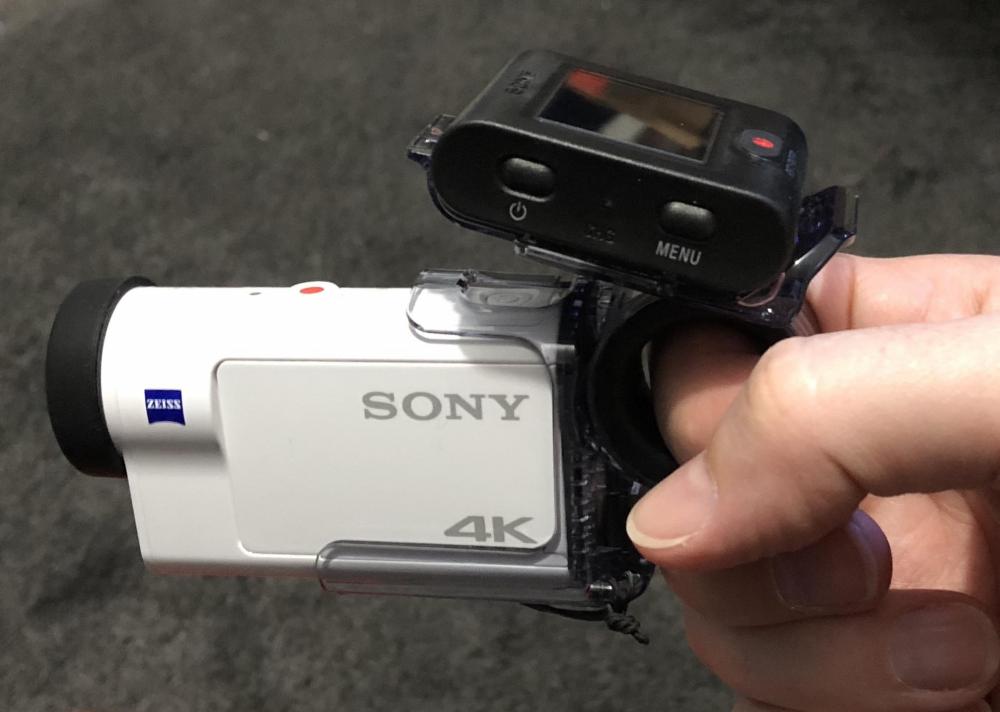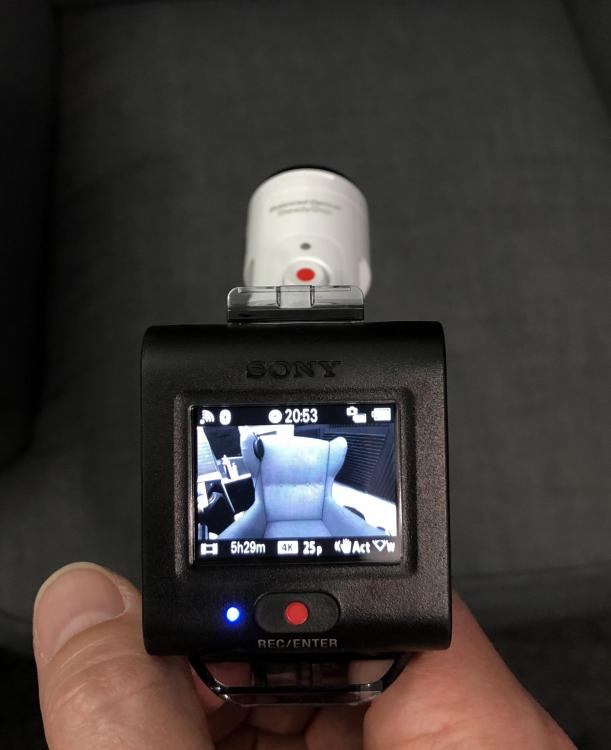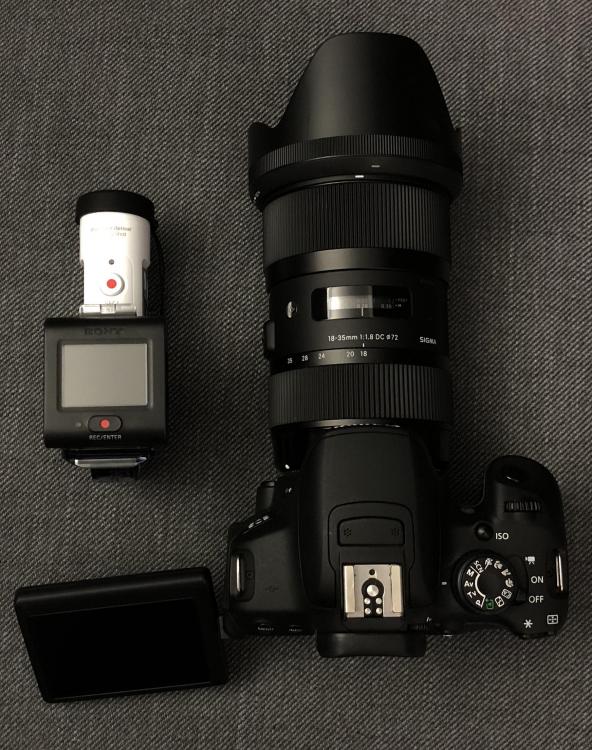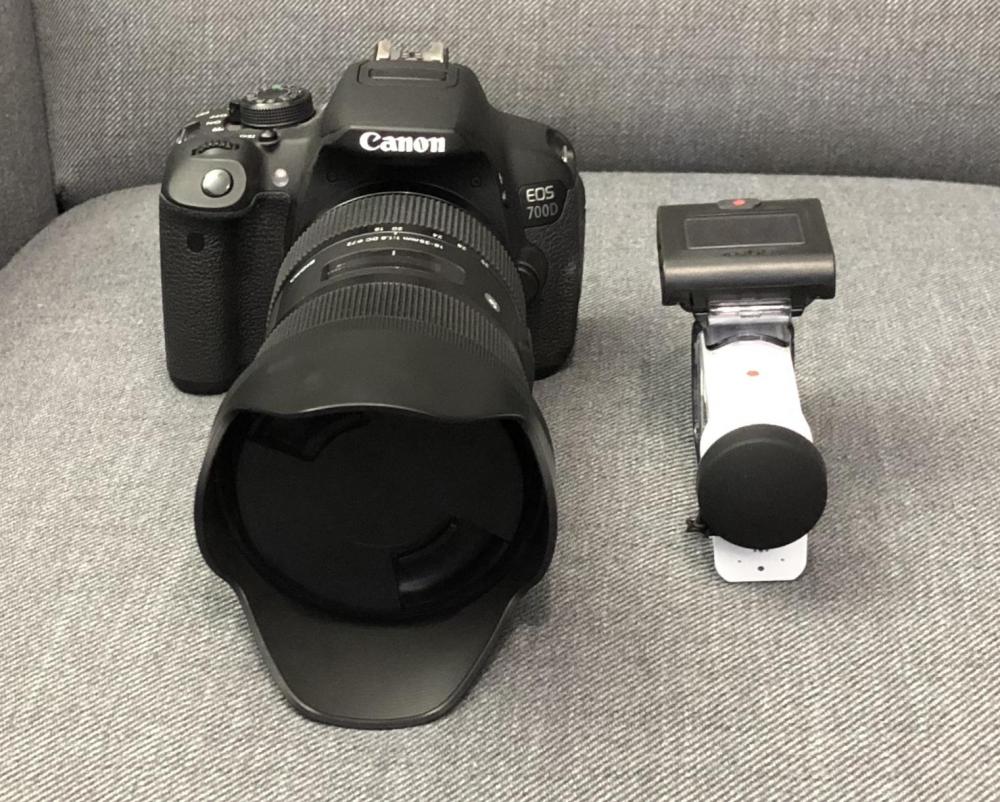-
Posts
8,027 -
Joined
-
Last visited
Content Type
Profiles
Forums
Articles
Everything posted by kye
-
Do you think you'll be shooting 10-bit 240fps as your default resolution then? I'm still trying to decide if I'll shoot 1080p100, 1080p125 or 4k50 by default. I had kind of decided it would be 4K50 but now I'm trying to finish the rodeo video where I shot 4K50 and it's not slow enough to really get the slow-motion to feel like a special effect, instead you get that slightly-dreamy feel that doesn't quite stand out enough. I can't even imagine 10-bit 240fps!
-
I think people can get a bit precious when talking about bit depths for colour, when I think that above 10-bit it's the compression and codec that is much more important. If someone reading this disagrees then I'd highly encourage them to get your hands on some 14-bit RAW files and export them to a 10-bit, 12-bit and 14-bit uncompressed files and then compare those files in post. There's lots of debate about if 8-bit is enough or if 10-bit is required, but there's no huge emotions in talking about 10 and up. I shot a bunch of RAW test clips with ML at different bit depths and decided that 10-bit was all I needed, and coming from that footage to the 10-bit files from my GH5 I don't miss anything in terms of colour grading ability. What I do miss is the RAW image quality and how analogue it is in comparison to h264 and even h265.
-
In the spirit of "the more you look, the more you will see", I was wondering if I should just pick something brilliantly made and just watch it over and over and over again. Kind of learning by osmosis. I'm thinking that at first you'll see the story, but after a while once you get bored of that, you'll start noticing more and more, and eventually you'll be aware of framing, lighting, dialogue, pacing, editing, music, sfx, vfx, grading, etc etc. Instead, we watch things once, or maybe a few times, but never enough time to notice everything about it. Has anyone done this? What would you watch? Could you watch it 100 times? or more?
-
@Cinegain I hear you.. Reminds me of this video which was also posted very recently, where he had visa trouble because the government didn't understand that someone would do video work for free.
-
To me, the rules: Help out professional drone pilots (or will create a domestic marketplace) Hinder the average YT person that wants high IQ but won't become a pilot Help to shift demand from mid-sized drones (eg, Mavic) to tiny drones that are below the maximum weight for unrestricted drone use (normally something like under 250-300g IIRC)
-
I'll add USB-C port to the spec then, a la P4K. However, the price of CFast cards are partly offset by their small size in comparison to an external SSD.
-
The drone market is a strange one. Simultaneously you've got DJI pumping out better, faster, cheaper drones with higher and higher image quality, while simultaneously countries are bring in legislation that prohibits anyone flying them unless they're basically a pilot. eg (ignore the click-bait title) I see a collision of supply and demand that won't end well for DJI stock prices.
-
Nice! What are the additional features this gives that you're most excited about? Very similar to the Sun zoom I have now, the pump style is very nice to use. I must admit that I've been a little curious of the difference between what good optics vs no-name optics are like, so I just ordered a Canon 70-210 F4, a Canon 2X TC, and an FD-MFT adapter (my first canon to m43 adapter!) so I'll be able to compare genuine glass vs the no-name stuff. Do it!! Lots of great vintage primes out there. There's lots of love for the Takumars (which have the focus backwards) but the Minolta stuff is also excellent.
-
I love the clickbait-ey thumbnail... because people just don't care about secrets if they're only revealed in 1080 ???
-
I'm just winding you up I've found and reported a few bugs over on the BM forums too. So far though, not a lot of issues from my end. I have had a few WTF moments, but then thought about it and realised that it's probably just a design decision where it works the way it is for some situations, just not the particular way I happen to be using it.
-
If you consider the BMPCC4K a cinema camera (which you should) then you'll understand how a cinema camera can put pressure on DSLR/MILC cameras. You only have to look at what impact the BMPCC4K had on people shooting with other cinema cameras (eg, lower-end REDs) to know that the more cinema cameras that come out challenging the specs-vs-price equation like the ZCam, Kinefinity, BM, etc the more pressure it puts on the big cinema names like RED and ARRI, but also those manufacturers who span the two worlds like Sony, Canon, etc. It's all connected. Sometimes loosely connected, but connected just the same.
-
I'm editing the video for my 5 week honeymoon trip in Italy - does that count as important? ??? Seriously though, I've had less crashes on 16 than I used to get on v12.5 per hour. I'm not even kidding. I am doing backups each time I get a new beta though.
-
Yeah, and an incremental update where you only have to download the patch, rather than the full standalone version would be nice. I have tonnes of internet, but making people download the same thing again and again is just annoying and wasteful.
-
Interesting stuff. Seems like it might be the time of the 6K camera, which for many will be a nice compromise between the file sizes and cost of 8K but still gaining the ability to crop, stabilise, or downscale in post for a 4K delivery.
-
My 2x teleconverter for PK mount arrived today. It was a bargain, especially considering that when I opened up the original instructions that came with it, I discovered that it begins with: "The TELEPLUS is the finest quality lens extender on the market" Score!! Even @BTM_Pix can't argue with that! I took some test images through my Sun 70-210mm f3.8, both with and without the TC, and initial impressions suggest that it does a pretty good job of zooming into the horrible CA that comes from the zoom lens! It's a wonder why the person was selling it, maybe it was the whacking great fingerprint on one side of the glass element... ??? I'll be sure to take some test shots over the weekend to properly evaluate it, but it will be great to have some extra reach, considering I'll now have the FF equivalent of a 280-840mm f16 lens.
-
Peter should be able to sort you out, I hope anyway. It's worth trying the next beta and seeing if it resolves it, har har har.
-
Nice collection, some ones in there I'm not too familiar with. If you feel inclined I'm sure lots of people would appreciate seeing a video with some footage from each of them so people can make a bit of a comparison. Extra useful if they're in the same lighting conditions. If you're still in Melbourne then I'm sure an overcast or rainy day would have pretty consistent lighting, maybe you can get shots of Melbournites celebrating the climate of their home city by madly dashing through a downpour trying to avoid puddles I've got two Helios 58mm f2 lenses and the Mir 37mm f2.8 and found them to be quite different in character. The Helios is pin sharp in the centre and falls away significantly, even when on MFT where you're only looking at the centre of the lens, whereas the Mir had a different character. They also all change character from wide open to stopped down a couple of stops, so there's lots of variables going on. I was particularly excited to get the Mir because it is supposed to be apochromatic, and to its credit that did give it a different rendering, but I ended up going a different direction and have chosen the Konica Hexanon 40mm f1.8, which is not only faster but is also considered one of the sharpest lenses ever made (if not the sharpest). I have no idea if that's true but it's not that typical vintage look! I remember that video of the busker from when you posted it previously, it's nice work and the IQ is very nice. I think many many people would be happy with the combination of the resolution and beefy codecs of the P4K through vintage glass that takes that modern sheen off it.
-

The new Mac Pro + 6k monitor has landed - introducing the Cheese Graters
kye replied to Trek of Joy's topic in Cameras
In a sense I'd agree, but the bigger picture is a bit more complicated. Over time computers have been getting smaller and cheaper. Early computers were custom built, cost millions of dollars, and took up entire floors of buildings. They were run on valves (tubes for you US folk), needed huge amount of power, created amazing heat, and were subject to all kinds of issues like valves burning out, dust making faulty connections and insects getting in (where the phrase "a bug in the code" comes from). Then with the microprocessor revolution desktops appeared and eventually became cheap enough for domestic use. There were early portable computers around that required mains power but had integrated CRT monitors and keyboards, which were the first step towards portable computers. Laptops became feasible when battery technology and LCD displays reached sufficient maturity and low enough cost. Smartphones appeared when touchscreens and miniaturisation technologies matured. You can look at it like this, people do, but there are some wrinkles in here. For example, laptops are basically mobile phones with a huge screen, huge batteries, and keyboard. In many cases the hardware involved is the same, and phones can easily be made to run the same operating systems. Those with laptops who (like me) use them on the go but then 'dock' them to a larger monitor, storage, and potentially eGPU hardware etc, are essentially bridging the gap between laptops and desktop computers. The only limitation is the comms standards (like USB 3.1 or Thunderbolt 3) and software support. Smartphones have this potential as well - plug in your phone at home and run Resolve on it for example.. We currently turn our phones into laptops quite commonly: So, in the current marketplace laptops are sort-of desktops, and phones are sort-of laptops, what is the future of the desktop? Is it that desktops will be sort-of super-computers? If so, why shouldn't they be designed to be far more powerful than laptops, and priced accordingly? In a world where things are sort-of the next size up, it sort-of makes sense -
You're welcome!! I'm assuming they're all Russian lenses? I think I can spot the Helios 44 and Mir 37 in there, but the rest aren't obvious to me Confused and paranoid man with camera runs around at the seaside and accidentally becomes the saviour... talk about trotting out the old cliches!!
-
Did you figure it out? I have no idea, and if Jim couldn't help then it might be a strange bug of some sort, which means the normal troubleshooting steps, like copying every clip to a new timeline, or a new project, etc.. Alternatively, you could set the in and out points in the Deliver page to a single frame and then export the video using a codec that is an image sequence and get a single image that way. It's a bit of a PITA though!
-
@heart0less Have you checked in the Deliver page, there are some options (maybe under Advanced?) about using optimised or proxy media during the export, maybe these are accidentally enabled?
-
Great stuff, keep us informed. PS, I like your writing style, direct with lots of info in few words. Keep it up!
-
My finger grip for the X3000 arrived yesterday, it is a very interesting and well designed accessory. The unfortunate aspect of it is that it completely obscures the rear door, prohibiting the use of an external microphone. I've examined it with the intent to drill a hole in order to get a 3.5mm mic jack through the rig and into the camera, but it doesn't look like that is too feasible. I will do some testing with the built-in mics and see what I think. My uses for this camera are mostly without dialogue so ambient (non-directional) audio is probably fine. I think this rig might be one of the most interesting from a "nano-rig" perspective, and it might also be why there are hardly any third-party rigs for this thing - it covers the tiny rig category and if you are fine with larger rigs then the 1/4-20 mount provides you with all the options you would need.
-

The new Mac Pro + 6k monitor has landed - introducing the Cheese Graters
kye replied to Trek of Joy's topic in Cameras
There's an economic theory that basically says that 10% of your customers can afford to pay 10x the price for an item if it gives them something they can't get elsewhere. That means (for example) that if Apple are selling 18M computers per annum (link) then there are roughly 1.8M people who would buy a computer that cost 10x what the Mac cost. If a family car costs $25k think of how many people buy $250k or even $2.5M cars. And if R&D costs a the same figure to make a super-charged version then you will still recoup it by selling the same overall $ amount of them per year (10% of 10X is 1). You guys might be surprised they're pricing a computer so high, but I'm surprised that they don't make computers that cost $40k and $400k.







